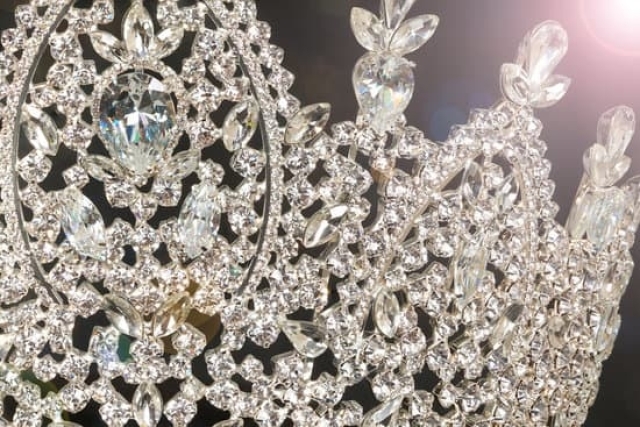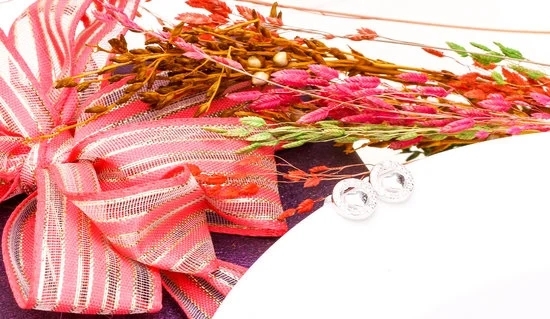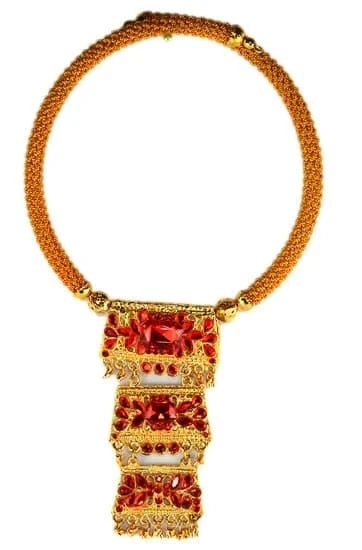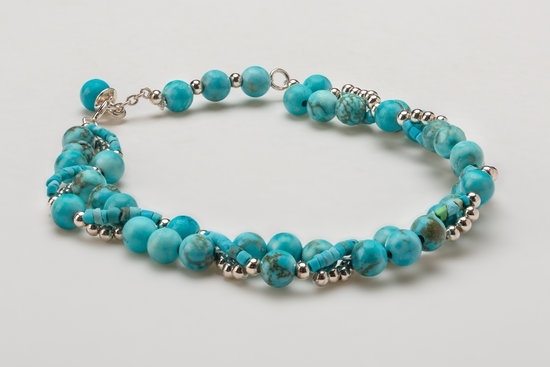Jewelry-making is an art that requires the right tools and materials. Many metals are commonly used in jewelry making, such as gold, silver, brass, copper, pewter and bronze.
Each metal has its own unique characteristics that make it suitable for certain applications. Whether selecting precious metals for fine jewelry pieces, or casting a base metal piece with cherishes gemstones and stones, choosing the right metal material to make jewelry can make a difference between success and failure of your projects.
Uses of Gold in Jewelry Designing
Gold is one of the most valuable metals around the world and is often preferred by fashion-savvy jewelry makers because of its color and shine. It does not corrode easily so designs featuring gold remain their true form over long periods of time.
The price range for this metal depends on its purity level; 24-karat gold is purest form available although it less malleable than other alloys or combinations in 14 or 18 karats which provide better flexibility for crafting delicate and intricate pieces. Creating hollow components from thin sheets of gold represent an economical way to reduce weight while retaining the original features needed for perfect ending results.
Silver Jewelry Making Advantages:
Using silver to craft jewellery is a great idea because it’s strong enough to hold shapes under pressure yet soft enough to obtain intricate details when working with dies, filigrees etc Silver also offers superior electrical conductivity compared with other metals making it ideal choice when creating battery operated components in jewellery pieces like watches.
Silver is relatively less expensive among popular precious metals so budget shoppers can get beautiful jewellery items at more affordable rates without compromising on visual appeal or quality standards.
Conclusion:
The type of metal material you use to handcraft jewelry items makes a lot of difference in terms of response from customers to your work as well preservative power over time along with market value if desired later on should you decide selling your crafted artworkpiece later on.
As seen here, Gold and Silver both offer attractive benefits for professional jewelers or hobbyists who wish create distinct pieces that stand out from rest mediums used nowadays but other closely related options such as brass , bronze , pewter ,copper etc…are suitable alternatives depending on individual preferences and budgets.
Precious Metals
The use of precious metals in jewelry has been around since the dawn of recorded history. Gold and Silver have been used to make jewelry since ancient times, while Platinum and Palladium are more recent additions that are rising in popularity. Niobium is also often used to make beautiful pieces of jewelry as well.
Gold has long been a popular choice for making jewelry items due to its shine and malleability. It is durable, striking in appearance and works well with other materials like gemstones or pearls. Silver has similar properties, but it does tarnish over time so many prefer using gold instead when designing jewelry.
Platinum is becoming an increasingly popular option due to its strength, purity and hypoallergenic nature. Jewelry made with platinum holds its value better than items made with other metals like gold or silver due it being rarer and more valuable in general. This makes it the ideal metal for high-end designs from engagement rings to specialized custom pieces of artistry. It also looks amazing when paired with diamonds for maximum sparkle and brilliance.
Palladium is another metal commonly used in jewelry making due to its similar hypoallergenic traits to platinum, although not quite as much in value as platinum itself. Like gold, palladium does require regular polishing as it does tarnish just like silver but luckily it can be easily restored back to its original sheen thanks to simple metal polishes or proper cleaning methods at home.
It’s a great metal if you don’t want something too expensive but still provides plenty sparkle depending on which stones you pair the metal up with.
Finally Niobium is a very lightweight but strong material that requires special tools for proper crafting of jewelry items like earrings or necklaces. Its flexible property makes it great for creating intricate designs without worrying about breaking or damaging jewellery designs due to any pressure applied during construction processes such as bending or hammering into shape.
The finish of niobium varies widely depending on what type you select – high-temperature anodized niobium will give off both beautiful blue tones along with pinks hues that look amazing under direct sunlight and boast incredible durability compared to other metals used in jewellery making..
Non-Precious Metals
Copper is one of the most commonly used non-precious metals for making jewelry. It has a warm color and is quite versatile, making it a popular choice for jewelry makers. Copper is also affordable which makes it ideal for any budget. Its malleability helps to create stunning pieces of jewelry with intricate designs. When copper oxidizes, it gains character and can be etched with decorative designs to enhance its beauty.
Brass is another popular material that can be used to design metal pieces of jewelry. Its shine makes it an attractive choice for rings, necklaces, earrings, and charms with intricate details. Brass has a similar look to gold without the expensive price tag since it is an alloy made from copper and zinc. Although brass tends to tarnish over time, it can easily be re-polished in order to keep its glow alive.
Iron is often used in unique pieces of jewelry either alone or as part of an alloy such as steel and ferronickel. Iron gives jewelry a bold look and provides structure and strength as well as versatility in design.
Iron jewelry can be shaped into various forms such as chains, cuffs, lances, etc., making them perfect gifts for special occasions. Iron will rust over time but protective sealants can help maintain their pristine appearance indefinitely if the piece gets exposure to moisture or sweat over time.
Overall each of these three materials offer unique qualities that can add dreamy flair or classic sophistication to any type of metal piece of jewelry imaginable. Whether you seek an historical artifact made from iron or a shiny piece from brass or copper you are sure to find something within your price point regardless of your budget.
Alternatives to Metal
When it comes to jewelry making, metal has been and continues to be the most popular material choice among both professional and amateur jewelers. However, there are plenty of alternative materials you can use to create beautiful and unique pieces of jewelry without relying on metal. Many of these materials are significantly more affordable, accessible, and offer you more creative freedom when crafting your own personalized pieces.
One popular alternative material for making jewelry is wood or bamboo. While soft woods such as balsa and basswood have been used as components in some jewelry designs for centuries, there are now many sustainable hardwoods available including walnut, cherry, maple, birch and oak that can be carved or carved into shapes or specialist finishes such as veneers.
As well as being a naturally strong material, the organic nature of wood creates versatile pieces that can less formal than something made of metal. If you require strength but still want the natural look that these grains offer then combining Jewelry components with gemstone chip bead strands in all kinds of colors reflects facets of natural beads, whilst adding an extra dimension to any design produced by this method.
Working with resin is another great way to create entirely unique pieces while using cheaper materials than metal. Resin jewelry is a combination of resin epoxy, pigments or dyes for coloration and objects like stones for texture and decoration. You can mix different colours together in a mold or container and create beautiful marbling effects or things like galaxies if you don’t mind getting a bit messy.
Otherwise, you could keep it simple by using pigment powder dye on its own and pour them over your desired shape so they hold permanently when hardened by the curing process. Polymer clay is also an effective choice for creating intricate patterns with minimal effort; simply mix different colors together before molding them into whatever design suits your project best.
Ultimately, there are endless possibilities when it comes to working with unconventional materials in jewelry making. Whether you’re interested in crafting something out of wood or experimenting with pigment powder dye, there’s no limit to what you can achieve given enough practice and patience With options like polymer clay just waiting to be given new life; what will be your next project?
Karats, Color Variations and Popular Uses of Gold
Gold is one of the most popular materials used to make jewelry. It has a number of karats available and many different hues and tones to choose from. Knowing more about gold, as well as its different variations and popular uses, can help you decide on the best type for your jewelry needs.
Gold is measured in karats. The purest form of gold is 24k, which means it is only made up of pure gold with no other alloys or metals added. This strength makes it very soft and malleable, making this type suitable for use in jewelry that doesn’t experience any wear and tear such as an engagement ring or necklace pendant.
The majority of high-end jewelry pieces are made from 14k or 18 karat gold because these provide greater strength than 24 karat without sacrificing too much of the beauty that purer forms provide. Both have their own unique colour depending on whether they’re yellow or white gold and if any additional alloys have been added such as silver or copper to alter their hue.
There are also shades such as rose, green, grey and blue that add character to an investment piece like a luxurious wedding band.
Aside from creating beautiful items like pendants, earrings and necklaces, gold also plays an important part in fine watchmaking where intricate mechanisms require heavy-duty resistance against damage yet still remain attractive to look at. Gold comes in handy more today than ever before since deeper water diving watches find themselves subjected to stronger resistances underwater due to salt water corrosion and mind-blowing temperatures changes between the surface and depths below sea level.
Unique Alloys, Durability and Popular Applications of Silver
Silver is a popular metal for making jewelry, as it offers a range of benefits to both the jewelry-maker and the wearer. Silver alloys can be created to create white gold and warm cool copper tones, or hard metals that offer greater durability. An alloy is a combination of two or more different types of metal that can be formed into shapes with unique properties and improved characteristics compared to its individual elements.
One of the most popular alloys used in silver jewelry is sterling silver–an alloy made up of 92.5% pure silver and 7.5% other metals such as copper, zinc or iron. This combination makes it an intriguing looking material which has decorative appeal, yet retains its inherent strength for everyday use on items like rings, necklaces and bracelets. The hardness and brilliance intact despite daily wear, and often shines even brighter after having been polished by a jeweler.
Plus due to its composition it’s often far less expensive than solid gold while still offering style and longevity The soft sheen of silver works beautifully with precious gems such as diamonds, pearls, sapphires and emeralds – – magnifying their sparkle while providing contrast against a cooler metallic backdrop.
As well as traditional jewelry pieces such as necklaces and earrings, silver is also commonly used in modern designs across favored accessories such as body piercing jewellery including nose studs or barbells- – because it offers relatively easy machinability which allows intricate components to be designed with artistry in mind when sculpted by hand.
Care and Maintenance
Metal is one of the most popular materials for making jewelry. From gold and silver to platinum and titanium, there are countless possibilities when it comes to metal jewelry designs which can last a lifetime. However, taking good care of metal jewelry is important so that it looks its best for many years to come. Here are some tips on how to maintain your shiny metal jewelries:
To begin with, always keep your metal jewelry clean. After each wear, use a soft, lint-free cloth or special cleaning solution designed specifically for precious metals, followed by mild soap (liquid dishwashing soap will do) and warm water to remove any tarnish that may have accumulated over time. In order to stay looking original and free from scratches, make sure not to use any abrasive materials or hard brushes when cleaning metal jewelry pieces.
Secondly, store your metal jewelry properly when not wearing it. Always keep them packed separately in cotton-lined boxes/containers/bubble wraps/soft bags and store in dry, cool places away from direct sunlight.
This is especially important for pieces adorned with gemstones as their color and brilliance could be adversely affected by ultraviolet rays present in harsh sunlight over time. Additionally, storing different pieces separately from one another helps prevent them from tangling or scratching each other during storage periods.
Lastly, be aware of your activites involving the wears as certain activities can lead to damage of your metal jewelry over time due to daily wear and tear such as knocks against hard surfaces or vigorous activities like swimming or beach going that would expose the piece to chemicals found in water which can be damaging in itself.
It’s also advised not bring heavy items like purses while wearing fragile pieces like necklaces – chokers or pins made entirely out of metals such as silver as this can cause them to break over time if done on a frequent basis.
Benefits of Different Metals
There are several different types of metals commonly used to make jewelry; some of the most common options include sterling silver, gold, platinum, and titanium. When choosing one of these metals to use in creating jewelry, it is important to understand their respective strengths and weaknesses in order to make the best possible decision for your needs.
Sterling Silver is perhaps the least expensive metal for making jewelry. The admixture of metals present in the silver gives it a signature sheen which is relatively longer lasting than gold or other precious metals. Additionally, sterling silver has a naturally bright color that can be further brought out through polishing and sharpening techniques. However, one of its main drawbacks is that it can develop tarnish over time and with wearing.
Gold Jewelry offers some advantages beyond sheer glamor-it is also resistant to tarnish or corrosion and has excellent hot workability which makes it ideal for intricate designs. It holds detail better than many other metals and its malleability allows flexibility of design when creating unique pieces with complicated cuts or settings. The downside however is that gold tends to be quite expensive compared to some other options.
Platinum jewelry provides unique benefits due to its durability: as a result of its hardness, this metal provides an extra layer of protection when placed into settings as holds stones extremely securely even when compared against traditional alternatives like gold or silver bands.
Additionally, Platinum’s density ensures that items produced with this meta last longer than those created with alternative materials; this means that del icate designs can survive more routine wear and tear without showing signs of damage or scratches over time.
Despite these benefits though, Platinum remainsthe most expensive metal considered for jewellery purposes – making it suitable mostly for luxury items such as engagement rings or heirlooms intended for special occasions only.
Finally Titanium jewelry is becoming increasingly popular owing tp its hypoallergenic properties and tremendous strength-to-weight ratio which makes them both lightweight yet highly reliable along with being rust-resistant which ensures longevity and functional qualities. While Titanium’s resistance does have some drawbacks insofar as imbuing standard devices like resizing rings rather difficult, still the relatively low cost compared plus incredible quality offered makes them an attractive option especially when designing casual pieces such as everyday wearing.

Welcome to my jewelry blog! My name is Sarah and I am the owner of this blog.
I love making jewelry and sharing my creations with others.
So whether you’re someone who loves wearing jewelry yourself or simply enjoys learning about it, be sure to check out my blog for insightful posts on everything related to this exciting topic!





